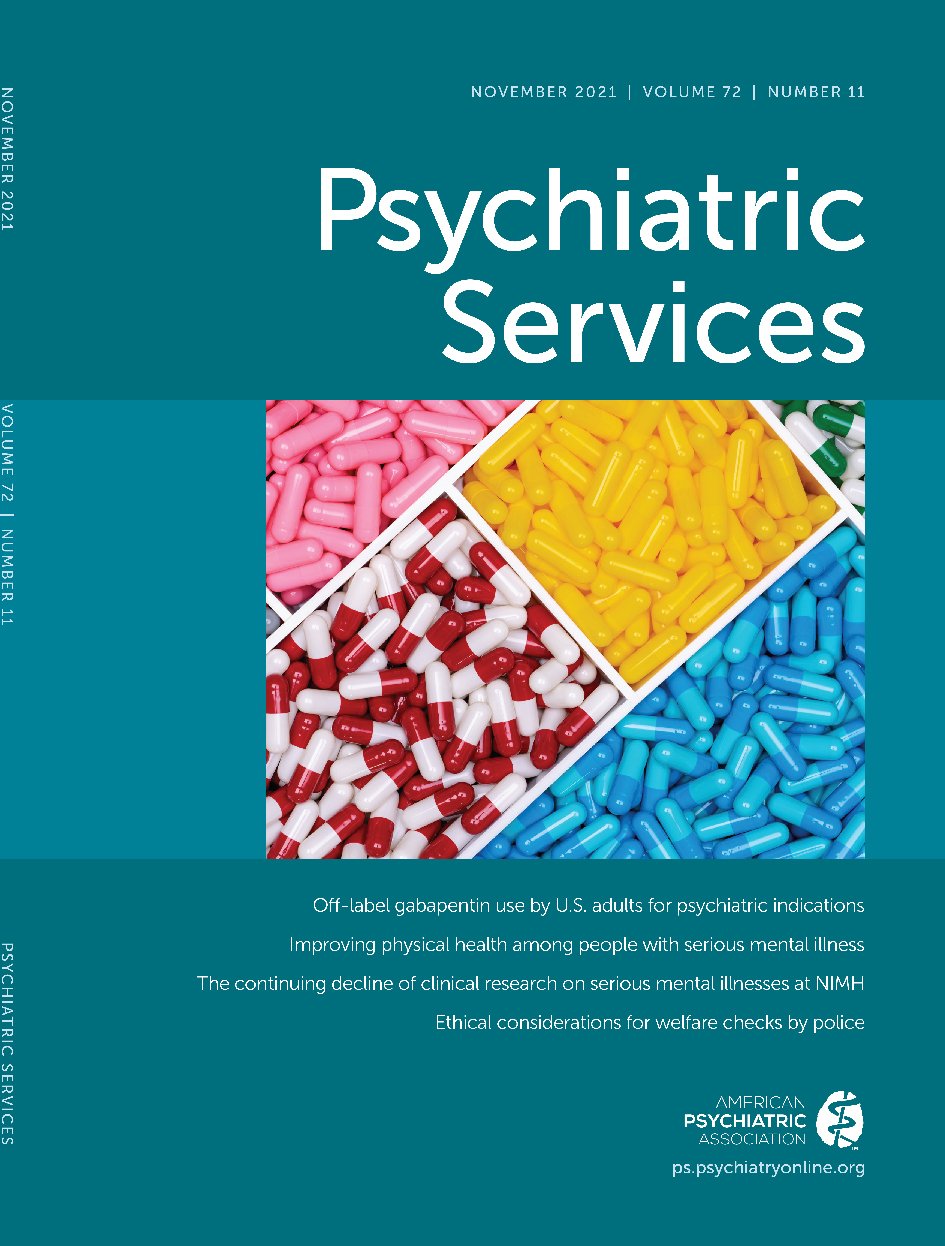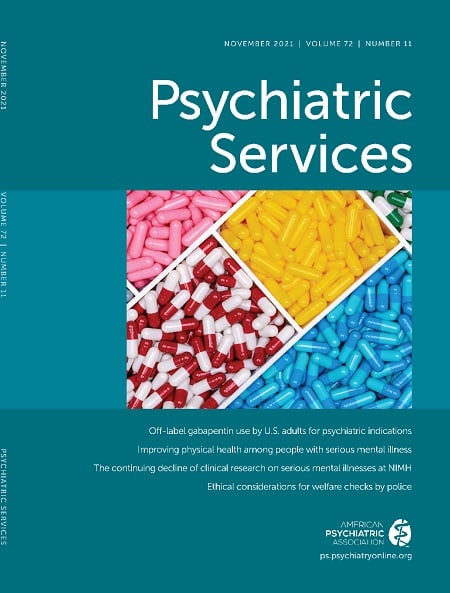A Qualitative Study of Barriers and Facilitators to Transitions From the Emergency Department to Outpatient Mental Health Care
Abstract
Objective:
Methods:
Results:
Conclusions:
HIGHLIGHTS
Methods
Study Design
Sample
Data Collection
Qualitative Analysis
Results
| Characteristic | N | % |
|---|---|---|
| Patients (N=30) | ||
| Age (mean)b | 37 | |
| Gender | ||
| Female | 12 | 40 |
| Male | 18 | 60 |
| Race | ||
| Alaskan Native or American Indian | 0 | 0 |
| Asian | 0 | 0 |
| Black or African American | 14 | 47 |
| Pacific Islander or Native Hawaiian | 0 | 0 |
| White | 13 | 43 |
| Other | 3 | 10 |
| Ethnicity | ||
| Hispanic or Latino | 2 | 7 |
| Not Hispanic or Latino | 28 | 93 |
| Psychiatric diagnosis | ||
| Depression | 14 | 47 |
| Bipolar disorder | 7 | 23 |
| Psychosis | 4 | 13 |
| Other diagnoses | 5 | 17 |
| Comorbid psychiatric diagnosis | 8 | 27 |
| Comorbid substance use disorder | 3 | 10 |
| Uninsured | 13 | 43 |
| CMHC engagement in 6 months before ED visit | 6 | 20 |
| At least 1 CMHC visit in 30 days after ED discharge | 19 | 63 |
| Distance to the CMHC (miles) (mean)c | 12.7 | |
| Providers (N=13) | ||
| Gender | ||
| Female | 12 | 92 |
| Male | 1 | 8 |
| Provider type | ||
| Mental health provider | 7 | 54 |
| Certified peer specialist | 6 | 46 |
| Main factor | Facilitators | Barriers | Example quotation |
|---|---|---|---|
| Patient level | |||
| Openness to treatment | Receiving diagnosis in ED; being open to treatment | Stigma; not ready to engage in treatment; patient thinking they can handle symptoms on their own | “The biggest barrier is they’re just not ready, you know? They’re not always willing to own that, but you as a counselor, you just kind of feel it, you know? They’re just not ready to make that drastic lifestyle change, or stigma I think is still a big part of it.” (provider) “I try to make sure that I go to every appointment, because it’s something that really helps me. . . . And so I kind of make it almost like a religious thing to go to my appointments, because it helps me that much.” (patient) |
| Logistics: transportation | Reliable car; close proximity to CMHC | No car; rely on other people for rides | “Due to transportation, I can’t get there that much. I’d be more than willing to go, but my transportation sometimes ain’t dependable.” (patient) |
| Logistics: financial difficulties | Having health insurance; employers are flexible | Lack of health insurance; appointment fees; travel expenses; unemployment; cannot take time off work; unstable living conditions | “I didn’t have no money during that time. . . . I didn’t know until afterwards I could pay a dollar or two and they still would see me.” (patient) |
| Logistics: severity of symptoms | Seeing symptom severity improve | Unable to attend appointments; physical conditions require other medical appointments | “They see a decrease of symptoms that actually encourages them to actually come back to treatment and stay engaged and do what they’re supposed to be doing, because they’re noticing a difference and a change, or others around them are noticing a change.” (provider) |
| Logistics: other needs or priorities | Family support | Difficulty finding or affording child care; family duties and responsibilities; lack of social support | “I didn’t see her last month because I ran . . . into some child care issues and with my work schedule, but she called me while I was at work, so . . . I was going to call her today and see if I can get an appointment before the end of this month to see her.” (patient) |
| Provider level | |||
| Connection between patients and providers | Positive rapport; feeling comfortable with provider; provider shows empathy, is caring, listens, and is not judgmental; provider taking time with patient; provider providing support and connection to resources | Lack of trust; patient feeling judged or uncomfortable | “I just felt secure. I felt like she was really there to help me and not hurt me, and keep going over those coping skills and coming up with different ones that I could do, especially when I have my anxiety attacks. And another thing I like, at the beginning, she just lets me talk to fill her in and what’s bothering me and how I’m feeling and everything, and then she tries to help me get out of that hole.” (patient) |
| Provider availability and contact with patients | Patients appreciate providers reaching out; flexibility with appointment times | High provider caseloads; limited time for outreach; difficulty contacting patient by phone | “I just couldn’t connect with them, yeah, calling at different times, and I just couldn’t connect.” (provider) |
| Health care system level | |||
| Coordination between ED and CMHC | Communication between ED and CMHC; coordination of appointment with CMHC; transfer of patient information to CMHC | CMHCs not always notified that a patient was in ED | “One of our clinicians actually works in the emergency department, and so it makes the communication easier, I think, because we have somebody on the inside. So we can get information pretty quickly on who’s there. . . . I feel like it makes it run a lot smoother and makes that care a lot better, between that emergency department and our clinic.” (provider) |
| Managing appointments at CMHC | Appointments available soon after ED visit; easy process of scheduling follow-up appointments; providers aim to schedule appointments together | Patients can be overwhelmed with appointments | “If I schedule them, okay, here’s your weekly visit with your therapist, here’s one with your peer support, here’s one with the doctor, here’s one with the nurse. . . . I think it’s overwhelming for them, so I think they choose to not show to some of these peer support ones, the ones in between.” (provider) “So for the most part if ever I need to pretty much come in and talk or if like there was an emergency, they always tell me, you know, just call up there and they’ll work me in, or you know, don’t hesitate to call basically. It’s like if I need somebody they’re always there.” (patient) |
| Health care resources: finances | Sliding scale for appointment fees | Low patient awareness of resources | “So we’re pretty much stepping up our ante now and making sure that everybody knows what we offer, because there are services, they just don’t take advantage of them just yet.” (provider) |
| Multiple levels | |||
| Clusters of challenges | Support and resources from family, CMHC, and state (e.g., Medicaid) | Combinations of the following barriers: lack of reliable transportation, no insurance, financial difficulties, inflexible work schedules, and lack of child care | “Transportation, and transportation affects everything, and then insurance. . . . So if they don’t have transportation to get here, they don’t have, you know, mental health therapy, they don’t have access to medication, you know, so it just throws everything off.” (provider) |
Patient-Level Barriers and Facilitators
Openness to treatment.
Logistical barriers: “I can’t get there that much.”
Provider-Level Barriers and Facilitators
Patient-provider connection.
Establishing and maintaining connections.
Health Care System–Level Barriers and Facilitators
ED to CMHC coordination.
Managing clinic appointments.
Health care resources.
Discussion
Conclusions
Footnotes
References
Information & Authors
Information
Published In
History
Keywords
Authors
Competing Interests
Metrics & Citations
Metrics
Citations
Export Citations
If you have the appropriate software installed, you can download article citation data to the citation manager of your choice. Simply select your manager software from the list below and click Download.
For more information or tips please see 'Downloading to a citation manager' in the Help menu.
View Options
View options
PDF/EPUB
View PDF/EPUBLogin options
Already a subscriber? Access your subscription through your login credentials or your institution for full access to this article.
Personal login Institutional Login Open Athens loginNot a subscriber?
PsychiatryOnline subscription options offer access to the DSM-5-TR® library, books, journals, CME, and patient resources. This all-in-one virtual library provides psychiatrists and mental health professionals with key resources for diagnosis, treatment, research, and professional development.
Need more help? PsychiatryOnline Customer Service may be reached by emailing [email protected] or by calling 800-368-5777 (in the U.S.) or 703-907-7322 (outside the U.S.).

